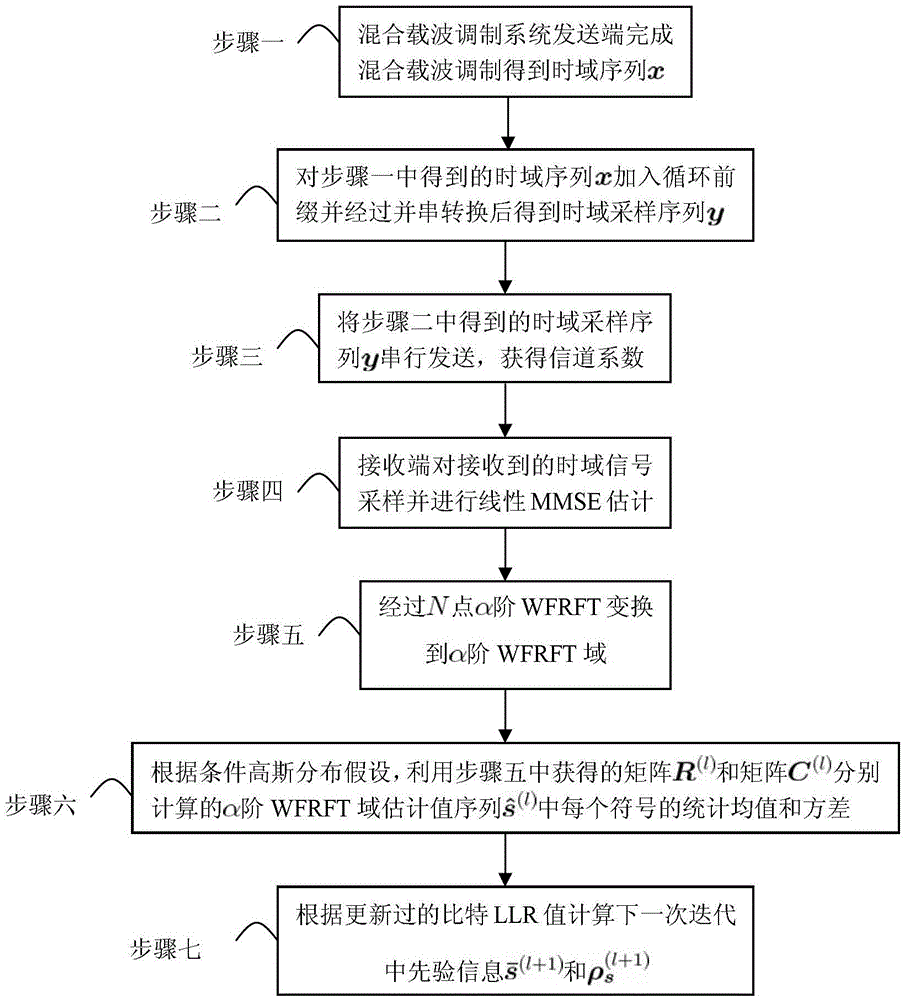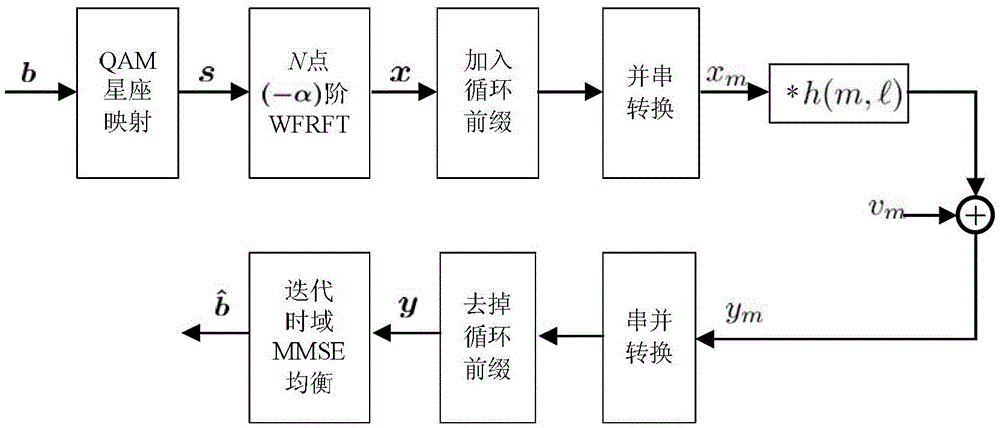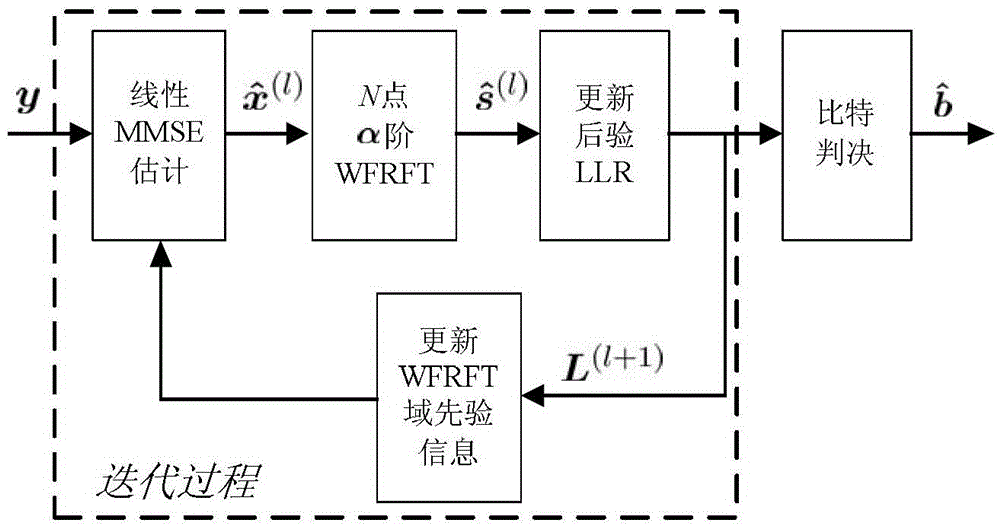Iterative Time-Domain Minimum Mean Square Error Equalization Method Based on Weighted Fractional Fourier Transform for Double Dispersion Channels
A minimum mean square error, fractional Fourier technology, used in baseband system components, shaping networks in transmitter/receiver, multi-frequency code systems, etc., can solve problems such as signal energy dispersion
- Summary
- Abstract
- Description
- Claims
- Application Information
AI Technical Summary
Problems solved by technology
Method used
Image
Examples
specific Embodiment approach 1
[0062] Specific implementation mode 1: The iterative time-domain minimum mean square error equalization method under the weighted fractional Fourier transform-based dual dispersion channel of this implementation mode is implemented in the following steps:
[0063] 1. The sending end of the mixed carrier modulation system completes the mixed carrier modulation to obtain the time domain sequence x;
[0064] 2. Add a cyclic prefix to the time-domain sequence x obtained in step 1 and obtain a time-domain sampling sequence y after parallel-to-serial conversion;
[0065] 3. Send the time-domain sampling sequence y obtained in step 2 serially, sample the received time-domain signal, remove the CP and perform serial-to-parallel conversion processing at the receiving end of the double dispersion channel, and then obtain the channel coefficient by means of the channel estimation method;
[0066] 4. The receiving end samples the received time-domain signal and performs linear MMSE estima...
specific Embodiment approach 2
[0121] Specific embodiment 2: The difference between this embodiment and specific embodiment 1 is that in step 1, the sending end of the mixed carrier modulation system completes the mixed carrier modulation to obtain the time domain sequence x. The specific process is as follows:
[0122] At the sending end of the hybrid carrier modulation system, the data bit sequence b of length NQ is mapped to an N-length QAM symbol sequence s through constellation modulation, and each Q bit {b n,0 ,...,b n,Q-1} is mapped to a symbol s n , perform -α-order weighted fractional Fourier transform on the obtained QAM symbol sequence, and complete the mixed carrier modulation to obtain the time domain sequence x:
[0123] x=F -α s=(w 0 I+w 1 F+w 2 A+w 3 f -1 )s(1)
[0124] where F -α Represents the -α-order normalized weighted fractional Fourier transform matrix, I represents the N×N identity matrix, F represents the normalized discrete Fourier transform matrix, A represents an N×N per...
specific Embodiment approach 3
[0128] Embodiment 3: The difference between this embodiment and Embodiment 1 or 2 is that in step 4, the receiver samples and estimates the received time-domain signal as follows:
[0129] Time-domain signal sampling: add a cyclic prefix to the time-domain sequence x modulated by the mixed carrier and obtain a time-domain sampling sequence after parallel-to-serial conversion, send the obtained time-domain sampling sequence serially, and reach the receiving end after going through a double-diffusion channel, ignoring In the CP part, each time-domain sampling sequence received by the receiving end is expressed as the convolution form of the sending end sequence and the discrete impulse response of the channel:
[0130] y m = Σ l = 0 N h - 1 h ...
PUM
 Login to View More
Login to View More Abstract
Description
Claims
Application Information
 Login to View More
Login to View More - R&D
- Intellectual Property
- Life Sciences
- Materials
- Tech Scout
- Unparalleled Data Quality
- Higher Quality Content
- 60% Fewer Hallucinations
Browse by: Latest US Patents, China's latest patents, Technical Efficacy Thesaurus, Application Domain, Technology Topic, Popular Technical Reports.
© 2025 PatSnap. All rights reserved.Legal|Privacy policy|Modern Slavery Act Transparency Statement|Sitemap|About US| Contact US: help@patsnap.com



